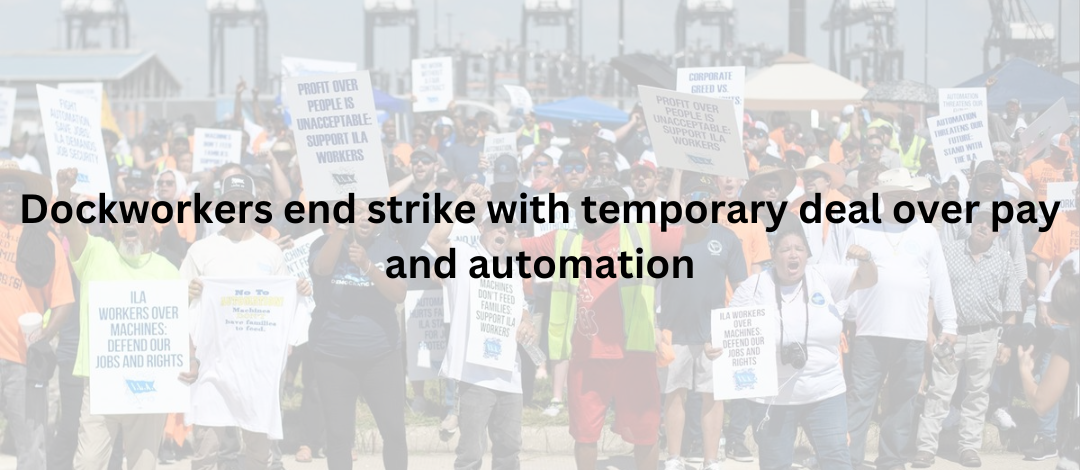
Dockworkers end strike with temporary deal over pay and automation
Strike-ending agreement offers temporary 62% pay hike to U.S. dockworkers represented by the International Longshoremen’s Association (ILA) The walkout, which effectively shut 36 major East and Gulf Coast ports, came amid growing fears about a future in which automation takes over more jobs that now require longshore workers.
Fighting Over Wages and Worries About Automation
The strike was over two main issues: fair wages, and a ballooning threat of automation. Dockworkers, who now handle the multicolored containers, worry that automation would doom their well-paid jobs. Those concerns also splashed across protest signs — “Automation threatens our future” was a common message.
At the same time, workers want job guarantees for any extension of long-term contracts from automation to ensure that they do not lose their jobs.
Economic Impact of the Strike
Nationwide fear of shortages followed the strike, which had cascading effects throughout the supply chain. Estimates were that the U.S. economy was losing $2 billion to $5 billion a day. Businesses called on President Biden to step in, but he instead urged the two sides to come to an agreement through negotiation.
Challenges ahead for automation talks
The strike may be over, but the big questions about what automation does to the way capitalism functions in the long run are far from solved. There are still key questions to be answered as negotiations proceed, such as figuring out the balance between adopting new technologies and securing jobs for dockworkers in the U.S.
